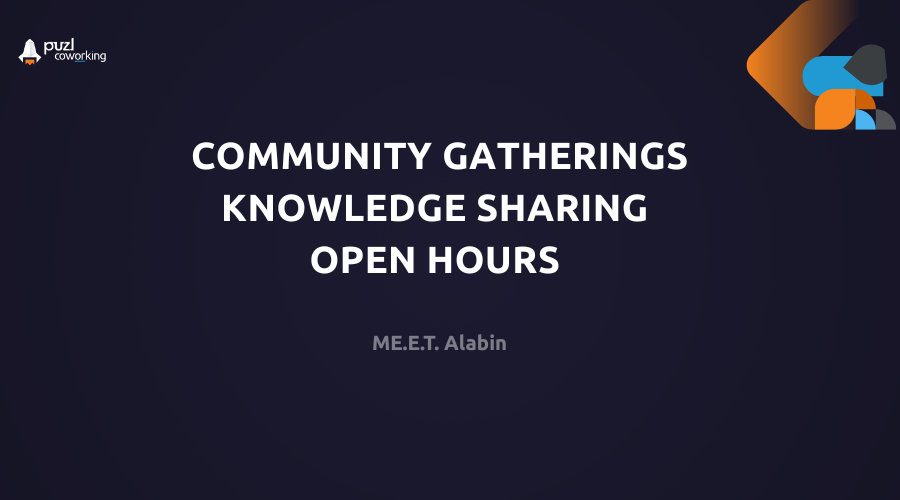Puzl kITchen 2.0 - Putting stable & efficient processes in place
For this edition of Puzl’s knowledge-sharing format, we’ve had a line of pretty savvy process heavyweights with a humongous amount of experience and knowledge to share on how the heck startups & businesses can better their workflow processes & organization.
.png)
The discussion was moderated by non-other than Alex Tokmakchiev - now Puzl CowOrKing’s ex COO and the main responsible figure for setting up the internal processes & tools of the coworking. At this kITchen, Alex had to put his dope experience into practice and handle (and he did!) the discussion between:
Ivan Dachev - Co-founder and CTO at DataStork, a boutique engineering company. With his 20+ years of experience in software engineering, he loves to crunch tough technical problems and brings technical expertise in multiple IT areas.
Vestimir Markov - founder and toolmaker at studio Raketa, Vestimir has been making websites and web tools since 2003. Currently, he puts most of his efforts on creating and exploring new ways for better communication between designers and developers.
Petyo Ivanov - Product Manager at Glue42 and a Telerik alumni, Petyo works on designing sustainable open source business models in the financial enterprises. As a Product Manager, he advocates for context-aware, individual-friendly processes extracted from what's known to work.

So let’s see a recap of what these process masters shared on putting stable & efficient processes in place!
Defining Processes
Before getting deeper into the subject, some common notions on what a process actually is had to be set. Vestimir had a fair point on the subject, defining processes as a continuous series of actions, carried out by several people, following a preconditioned structure & setup of procedures and steps. Which in an ideal world, would have to lead to a clear output. The sole purpose of a process is to be a reusable foundation for same or similar goals and tasks, thus automating and optimizing their execution. Which, if done right, should save you tons of resources - time, human brainpower (better put in creative processes than mundane tasks, right?) and money.
Process bites
Well, we don’t mean that processes could bite (although they can be intimidating at the least, if they’re not tamed well). What was meant here is that for better workflow and efficient use of resources, every project should be split into smaller “bites”, which are easily manageable and better for immediate interactions when needed. The Agile methodology (in all its different variations) was mentioned here as a good example of how you can structure your team’s workflow, by tearing down bigger projects into smaller and repeatable chunks (iterations). That way your client or product owner's feedback could be implemented on the go. And ideally without much pain.
Syncing internal and external processes
With no surprise, one of the main discussion points that reoccurred throughout the session was on how you manage your company’s internal workflow and adapt to your clients', which are rarely on the same page. And that could be a serious deal-breaker. In order to get better synchronization, it’s always a good idea to find the so-called Change Agent within your client’s team. The Change Agent should be entitled to finding common ground between you, as a service or product provider, and the company in order for all parties to be on the same page.
The blockings
Drawing from their experiences, the speakers agreed that usually, the common breaking point in a process of any kind is not in its structure or assets, but the human factor. Handling processes requires strict personal responsibility and a variety of soft skills, which help teams adapt to changing situations or unique cases. So even if you have a perfect setup of processes, always be mindful of the human factor.
Directly responsible individuals
Or in other words - process owner. Having a directly responsible individual (DRI) might be a good solution for the steady flow of any process. This individual takes ownership of a certain process and monitors how the people involved are following the steps and helps handling issues that are unique and not recognized by the preset process guidelines. The DRI is also responsible for developing the process in time, taking in consideration what needs to be optimized for different projects. Having a person like that is not always an option, but it could be of tremendous help for putting order in otherwise poorly organized process structures.
Beware of the rock stars
Let’s face it - every team has that one person who is a walking database, or takes excessive responsibilities over many matters of the workflow. If we might use a gaming term - that’s the “tank” in your raid. And even if in certain cases that person could be of extreme help and fill holes in the workflow, it’s generally a bad idea to encourage that. Why? Because that disrupts the stable team workflow and is bad for the team morale - knowing that there’s always that person who can deal with any sort of task. That way you’re stripping the other team members from their own responsibility & ownership towards their work and in a long-term perspective, that’s a pretty poor strategy.
In a nutshell, we can conclude that a process is a must for every business out there, which needs to be handled with care, lots of personal responsibility and optimized whenever necessary so it can actually work in your favor.
About Puzl kITchen?
We started Puzl kITchen as a knowledge-sharing platform to benefit both the Puzl CowOrKing community and the Sofia startup gang. Аs any entrepreneurial community, we face many challenges, but we believe by sharing our knowledge, wins, and fuckups, we can grow together to be stronger.
That’s why every month, we’re gathering experienced people from the ecosystem to discuss the challenges that they’ve faced and to see how we could learn from their hard-earned experience.


.png)

.jpg)
